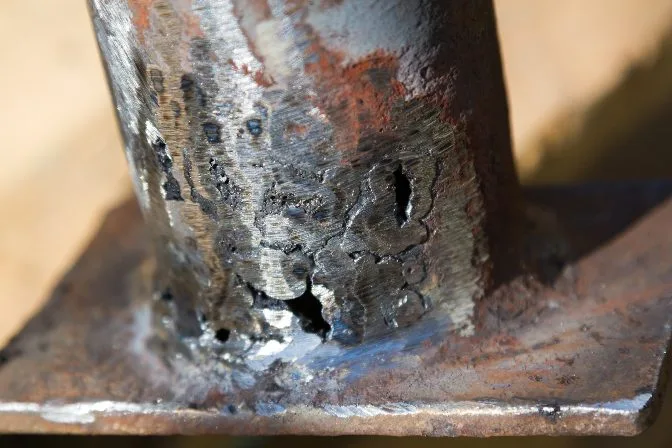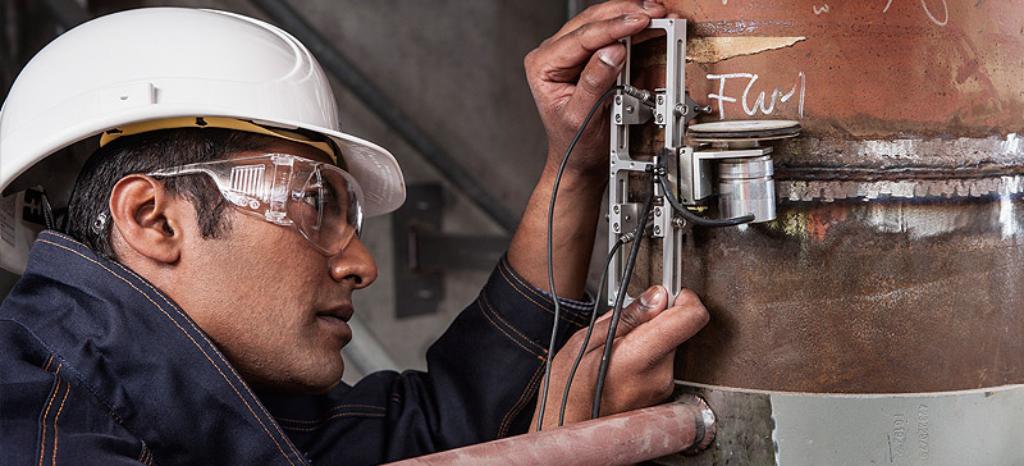Common Issues Found Throughout Welding Inspection Milwaukee and How to Fix Them
Common Issues Found Throughout Welding Inspection Milwaukee and How to Fix Them
Blog Article

Checking Out the Different Techniques and Requirements of Welding Assessment for Achieving Conformity and Dependability in Engineering Applications
The importance of welding examination in design applications can not be overstated, as it works as a crucial protect for making certain structural honesty and conformity with sector standards. Various methods, consisting of aesthetic evaluation and progressed non-destructive screening techniques, offer crucial insights into the quality of welds. Moreover, adherence to well-known governing standards such as those from AWS and ASME develops a structure for accountability and quality. The landscape of welding evaluation is constantly advancing, prompting a better assessment of emerging practices and their effects for design integrity. What might these growths entail for future tasks?
Significance of Welding Inspection
Welding evaluation plays a crucial duty in making sure the integrity and safety and security of welded structures. The significance of welding evaluation can not be overemphasized, as it offers as a secure versus possible failings that might result from inadequate welding practices.
Moreover, welding examination is vital for preserving quality control throughout the welding process. It ensures that the welds satisfy the necessary mechanical and physical buildings required for their designated applications. Regular assessments likewise foster a culture of responsibility and constant improvement within welding operations, encouraging adherence to best practices and market criteria.
In controlled markets such as production, construction, and aerospace, rigid welding inspection procedures are mandated to follow lawful and security requirements. Eventually, effective welding evaluation not just protects human life and building but likewise enhances the longevity and reliability of bonded frameworks, making it a crucial element of design and building.

Typical Welding Assessment Approaches
A selection of evaluation methods are utilized to evaluate the top quality and honesty of welds, each customized to detect particular kinds of flaws. Among one of the most typical techniques is aesthetic evaluation, which includes a detailed examination of the weld surface to determine visible problems such as fractures, damages, and inadequate fusion. This method is often the first action in the assessment procedure as a result of its simpleness and cost-effectiveness.
Another widely used technique is radiographic inspection, where X-rays or gamma rays penetrate the weld to disclose internal defects. This technique is especially efficient for spotting porosity and additions within the weld material. Ultrasonic screening utilizes high-frequency audio waves to recognize interior problems, offering an in-depth evaluation of the weld's honesty.
Furthermore, magnetic fragment assessment is utilized for ferromagnetic products, permitting the detection of surface area and near-surface defects by using magnetic fields and observing particle patterns. Finally, color penetrant screening involves applying a fluid dye to the weld surface area, disclosing splits and various other suspensions upon examination. Each of these techniques plays a crucial function in guaranteeing weld top quality and conformity with sector criteria
Non-Destructive Checking Techniques
Non-destructive testing (NDT) methods are necessary tools in the evaluation of weld top quality, allowing examiners to review the integrity of bonded joints without creating damage to the products. Numerous NDT approaches are used to identify potential flaws, making sure that welds satisfy the needed requirements for security and efficiency.
Among one of the most Full Article prevalent techniques is ultrasonic testing (UT), which utilizes high-frequency acoustic waves to find inner problems such as cracks or gaps. Radiographic testing (RT) uses X-rays or gamma rays to generate pictures of welds, disclosing any type of stoppages within the product. Magnetic bit testing (MT) works for identifying surface area and near-surface flaws in ferromagnetic materials through the application of magnetic areas and contrasting bits.
Liquid penetrant screening (PT) is an additional extensively utilized method that involves using a color to the surface area of the weld, which seeps into any fractures, making them noticeable under ultraviolet light. Each of these techniques provides unique benefits and restrictions, and the choice of an ideal strategy is critical to achieving accurate analyses of weld stability. Ultimately, the execution of NDT techniques considerably adds to the dependability and security of design applications.

Governing Standards and Conformity
In the realm of welding evaluation, adherence to regulatory requirements and compliance is paramount to make sure the safety and integrity of welded structures (Welding Inspection Milwaukee). Different organizations, consisting of the American Welding Culture (AWS), the American Society of Mechanical Engineers (ASME), and the International Organization for Standardization (ISO), have actually developed standards that regulate welding practices and assessment procedures. These requirements offer a structure for quality control, outlining the essential certifications for inspectors and the methodologies for assessing weld stability
Conformity with these regulatory standards not just boosts the structural integrity of welded assemblies but likewise alleviates risks related to failures, which can have devastating repercussions. Examinations must be carried out utilizing specified treatments, including visual, ultrasonic, and radiographic approaches, to make sure that welds fulfill defined criteria.
Furthermore, adherence to these standards is typically needed by legislation, particularly in markets such as manufacturing, aerospace, and building. Normal audits and qualifications are important to preserve conformity, thereby cultivating a society of safety and top quality within companies. Inevitably, governing requirements and compliance act as the foundation of dependable welding assessment practices, ensuring that crafted frameworks fulfill both performance assumptions and security needs.
Best Practices for Welding Examination
While preserving compliance with governing standards is important, implementing finest methods for welding assessment additionally improves the safety and honesty of welded structures. Effective welding evaluation starts with extensive planning, which consists of understanding the specific requirements of each project and ensuring examiners are trained in relevant methods and criteria.
Making use of a detailed evaluation list assists to guarantee all important facets are assessed, such as weld size, penetration, and visual issues. Non-destructive screening (NDT) strategies, such as ultrasonic or radiographic testing, must be used where appropriate, offering a more extensive assessment of weld high quality without compromising the stability of the materials.
Documents plays a substantial function in finest techniques; preserving accurate records of inspections, including photographs, test results, and conformity reports, ensures liability and assists in future evaluations. In addition, cultivating a culture of open communication in between assessors and welders can lead view publisher site to early recognition of possible problems, promoting immediate restorative activities.
Conclusion
In recap, the implementation of extensive websites welding evaluation techniques and adherence to established standards are necessary for making sure conformity and reliability in engineering applications - Welding Inspection Milwaukee. Techniques such as aesthetic assessment, radiographic screening, and ultrasonic screening serve as critical tools in keeping and recognizing defects quality control. By cultivating a society of accountability and quality, companies can improve the honesty and longevity of bonded structures, eventually adding to the safety and security and efficacy of design jobs
Numerous methods, including visual inspection and progressed non-destructive testing strategies, give vital insights into the top quality of welds.Welding examination plays an important duty in making certain the integrity and safety of bonded structures.A variety of evaluation techniques are utilized to assess the top quality and stability of welds, each customized to find certain kinds of defects.Another commonly utilized approach is radiographic examination, where X-rays or gamma rays penetrate the weld to expose interior issues.In the realm of welding assessment, adherence to regulatory criteria and compliance is critical to ensure the security and integrity of welded structures.
Report this page